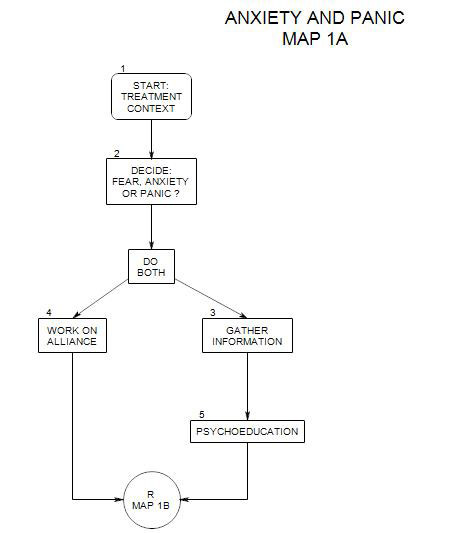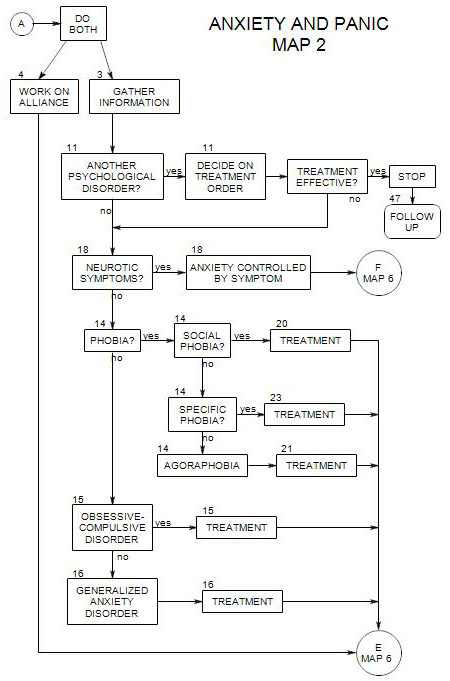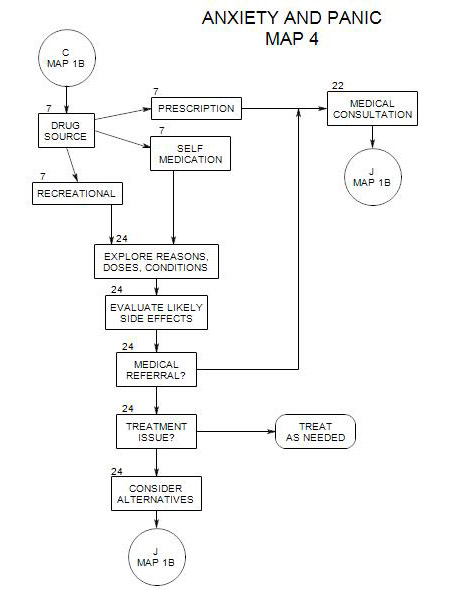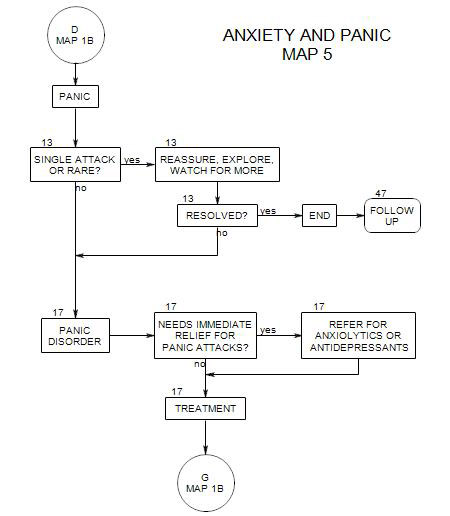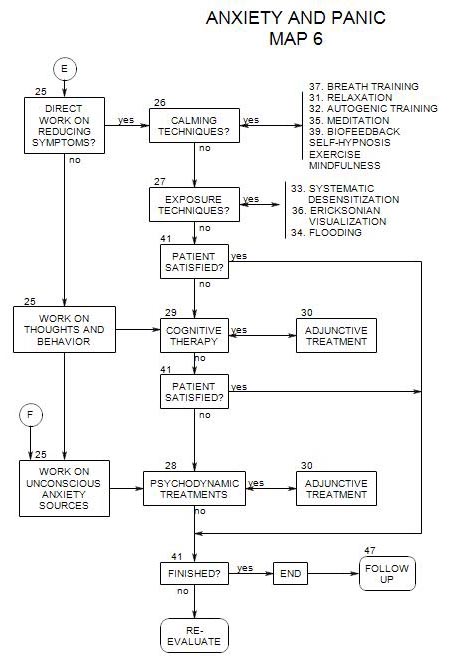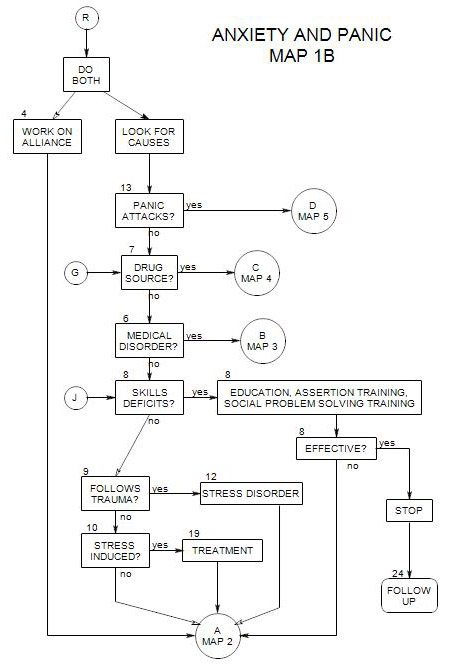
SECTIONS: 4 | 6 | 7 | 8 | 9 | 10 | 12 | 13 | 19 | 24
- Follows Section 41 on Map 6.
When terminating treatment, it is important to consider plans for a follow-up at a later time.If you decide to follow up with a particular person, you can work out the time for it with your patient, by suggesting that he/she get in touch and let you know how he/she is doing. If you also keep track of the follow-up date and the patient fails to call, you can then call to see how he/she is doing.
To schedule a follow-up supports the treatment alliance, by showing concern for your patient and for the effectiveness of the treatment.
It can also be an incentive for the person to maintain any homework, in anticipation of a call-back.
A follow-up call may be a reminder that further work is needed; or it may provide an opportunity for the person to brag about success.
You can mark the expected date on your own calendar, and if your patient hasn’t called within a reasonable time after the agreed date, you can make the call yourself. Not calling could be a sign that the anxiety is truly past and forgotten, or it could be evidence that the person thinks you or he/she has failed to resolve the problem. In the latter case, further treatment might be in order.
